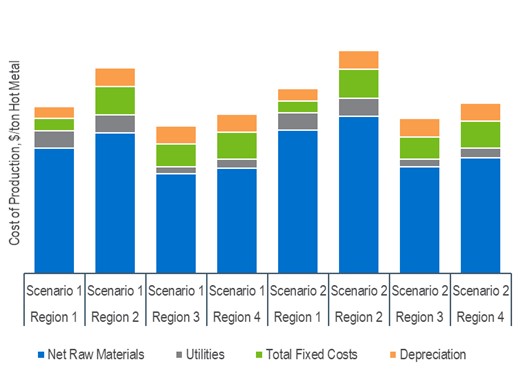New TECH Report - Green Steel (2024 Program)
Green Steel is one in a series of reports published as part of NexantECA’s 2024 Technoeconomics – Energy & Chemicals (TECH) program.
Overview
Since ancient times, carbon and its oxidation has been essential to steelworking. The advent of a strengthening regulatory environment focused on reducing greenhouse gas emissions, however, is causing a fundamental change in steel production technology. Blast furnaces are increasingly recognized as incompatible with a net-zero emissions future, while existing technologies such as direct reduced iron (DRI) adapt to accept green feedstocks.
Over $25 billion of investment has gone into pursuing a net zero emissions transition for millions of tons of steel industry capacity in the last two years alone. But with 1.9 billion tons of steel annually to decarbonize, there is still a long way to go.
Greening the steel industry will take hundreds of billions of dollars in investment and have far-reaching impacts. Supplying one of the most basic materials in construction and infrastructure, steel industry dynamics will have major ramifications for capital cost structures and regional competitiveness for all process industries while also presenting opportunities for green reducing agents, like hydrogen and carbon monoxide, used to replace the role of metallurgical coke in smelting iron.
This TECH report is a techno-economic overview of the steel industry’s green transition, focusing both on transitional decarbonization measures and the deployment of new infrastructure. Key questions addressed include:
How will the green transition in the steel industry occur over short, medium, and long-term timeframes?
How will DRI processes be adapted for green reducing agents?
What processes are available to handle low- and medium-grade iron ores unsuitable for DRI?
How much will green steel cost, and what will determine manufacturing cost competitiveness?
What are the carbon intensity (CI) impacts of the green steel transition, and how will they change as it advances?
Commercial Technologies
This report explores currently deployed commercial technologies for producing crude steel, the basic steel intermediate in integrated mills. Technoeconomic coverage includes blast furnace-basic oxygen furnace (BF-BOF) processing, electric arc furnace (EAF) processing of scrap steel, conventional DRI technology with an arc furnace (DRI-EAF), and emerging green DRI implementations. It also includes a speculative investigation of technologies for economically reducing low- and medium-grade iron ores, including a hybrid DRI-carbothermic reduction process using an open slag bath furnace, the DRI-OSBF-BOF process.
Process Economics
This report presents detailed cost of production estimates for major conventional technologies alongside green steel using DRI-EAF processing with green hydrogen and natural gas. Regional scenarios include the United States, Europe, Middle East, and China.
Cost of Production Comparison for Green Steel
Cost of Production Comparison for Green Steel

Commercial Overview
This report analyzes technical and commercial outlooks for green steel over time, charting the interaction of technology, CI, industry structure, existing investment needs, and government policy on the green steel transition’s investment needs and CI impacts.
Contact a member to our Insights & Analytics team to find out more about this report